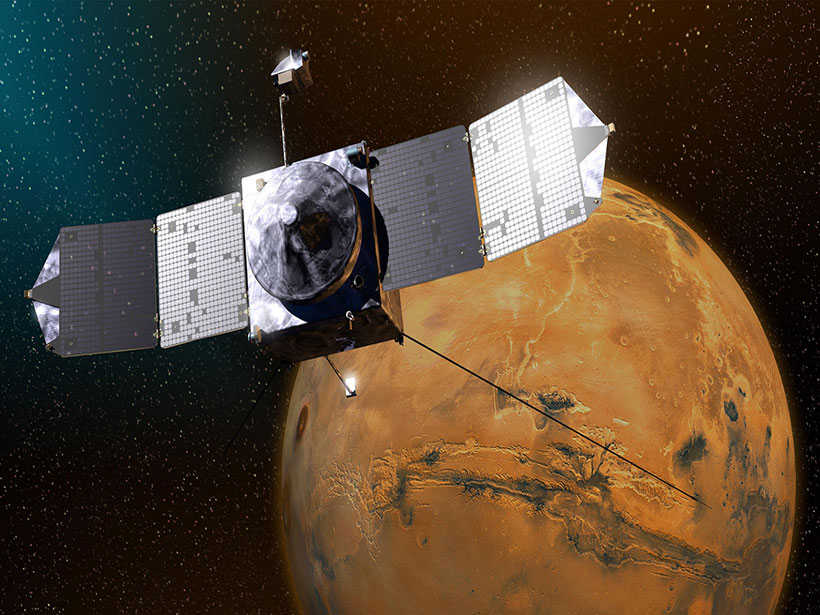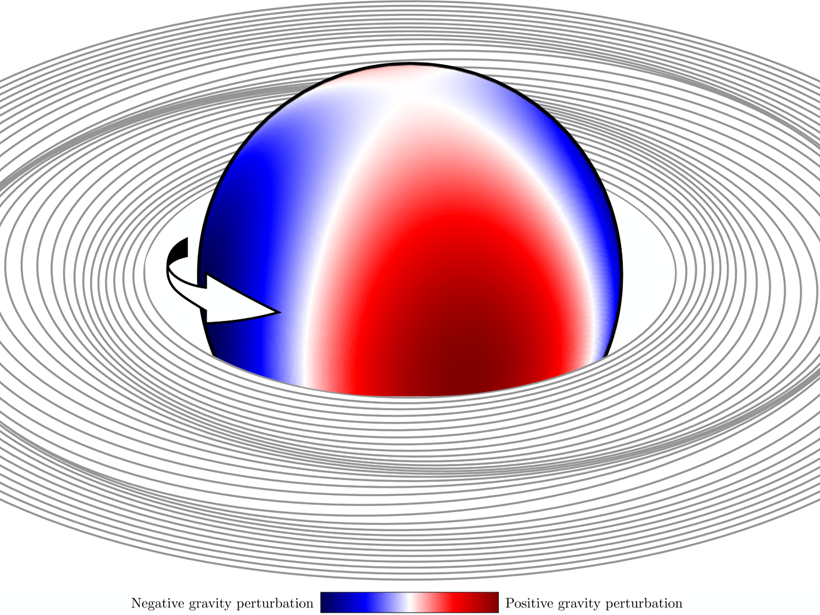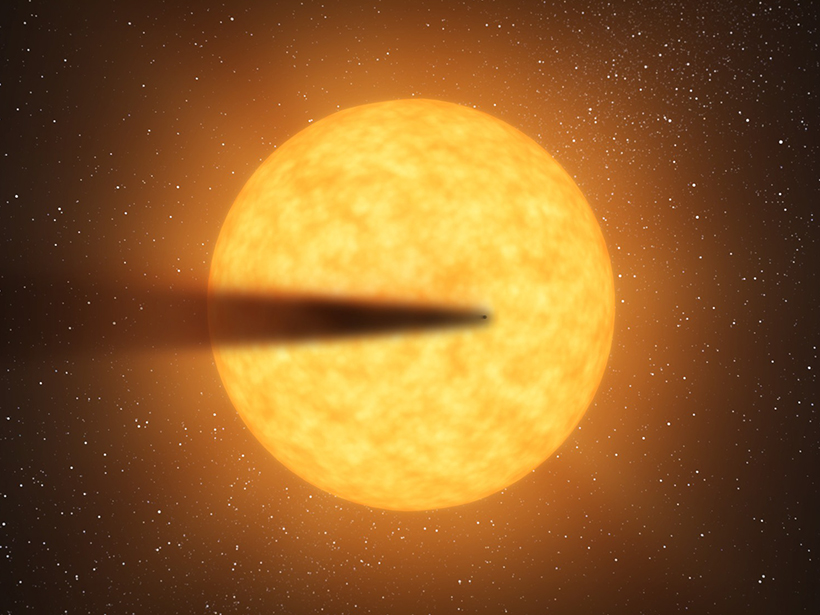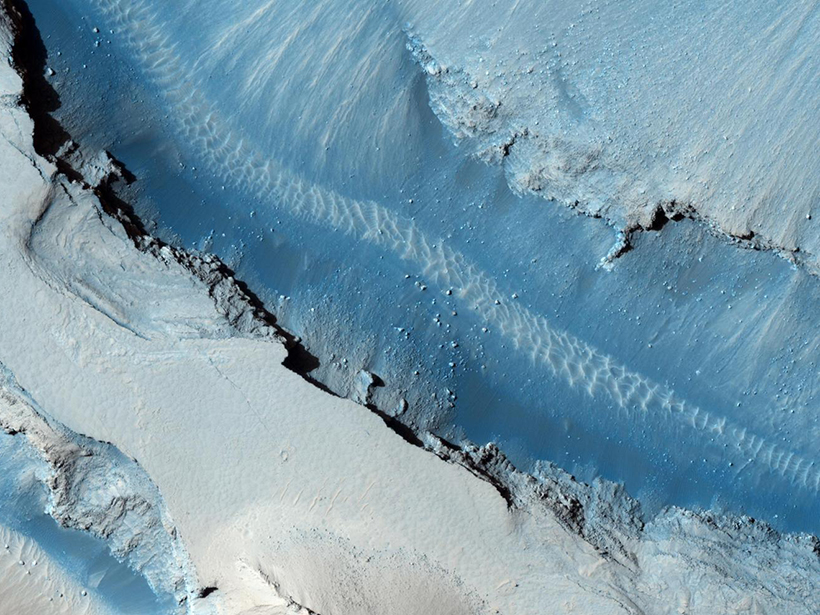When is a planet not a planet? Where does helium rain? How can water be solid and liquid at the same time? For answers, scientists put common planetary materials under extreme pressure and watched what happened next.
planetary interiors
A Longer-Lived Magnetic Field for Mars
New research indicates Mars’s dynamo may have been active for millions of years longer than previously thought.
Using Saturn’s Rings as a Seismometer
The Cassini spacecraft observed spiral density waves in the rings of Saturn which can be used to probe its interior structure and rotation.
Ancient Impact’s Seismic Waves Reveal Pluto’s Ocean, Core
By modeling the waves produced by a massive, ancient impact, scientists have begun to unlock the secrets of Pluto’s interior.
The Freshest Mineral Water in the Solar System
The water-rich plumes erupting from Saturn’s moon Enceladus show the chemical signs of water-rock interactions deep within the moon, further implicating Enceladus as a potential habitat for life.
Jupiter’s Galilean Moons May Have Formed Slowly
A new model is the first to simultaneously explain many of the moons’ characteristics, including their mass, orbits, and icy composition
Massive Collision Cracked Young Jupiter’s Core
The gas giant’s interior reveals evidence of an ancient impact.
Webb Telescope May Detect Minerals from Shredded Worlds
The upcoming James Webb Space Telescope should be able to measure the composition of vaporizing exoplanets, giving clues about the makeup of their cores, mantles, and crusts.
Searching for Signs of Marsquakes
Researchers use high-resolution images of Mars’s surface to look for signals of coseismic displacement.
How Did Venus Get its Youthful Surface?
Catastrophic lithospheric recycling is unlikely to be the cause of Venus’s young surface from mantle convection models constrained by offset between the center of mass and center of shape of planet.










